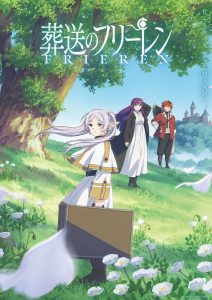
Episodes #1-4 (2023)
Studio: Madhouse
Distribution: Aniplex of America
Based on the manga by: Kanehito Yamada and Tsukasa Abe
Streaming: Crunchyroll
Release Date: September 29th, 2023
Frieren: Beyond Journey’s End is up against a fall season of big hitters. We have sequels to blockbusters Spy x Family, Attack on Titan and Dr. Stone. New adaptations of popular comics like The Apothecary Diaries, SHY and The 100 Girlfriends Who Really, Really Like You. An original series about Formula 4 racing, Overtake!, headed by Fate/Zero director Ei Aoki and featuring character designs drawn by Wandering Son artist Takako Shimura. Not to mention the long-rumored PLUTO adaptation, two more FLCL sequel miniseries and even Pokémon Concierge, a stop-motion series by the talented dwarf studio.
Frieren, though, tops them all. It’s based on a popular fantasy manga series by Kanehito Yamada and Tsukasa Abe that has won the Manga Taisho as well as the 25th annual Osamu Tezuka New Creator Prize; directed by Keiichiro Saito, whose Bocchi the Rock! adaptation last year restored my faith that anime adaptations could be good and weird; and produced by Yuichiro Fukushi, whose past work includes One Punch Man’s miraculous first season. The first four episodes of Frieren were aired consecutively on NTV in a timeslot reserved for films, not television shows. That Frieren would be good was never in doubt. The only question was just how good it would be.
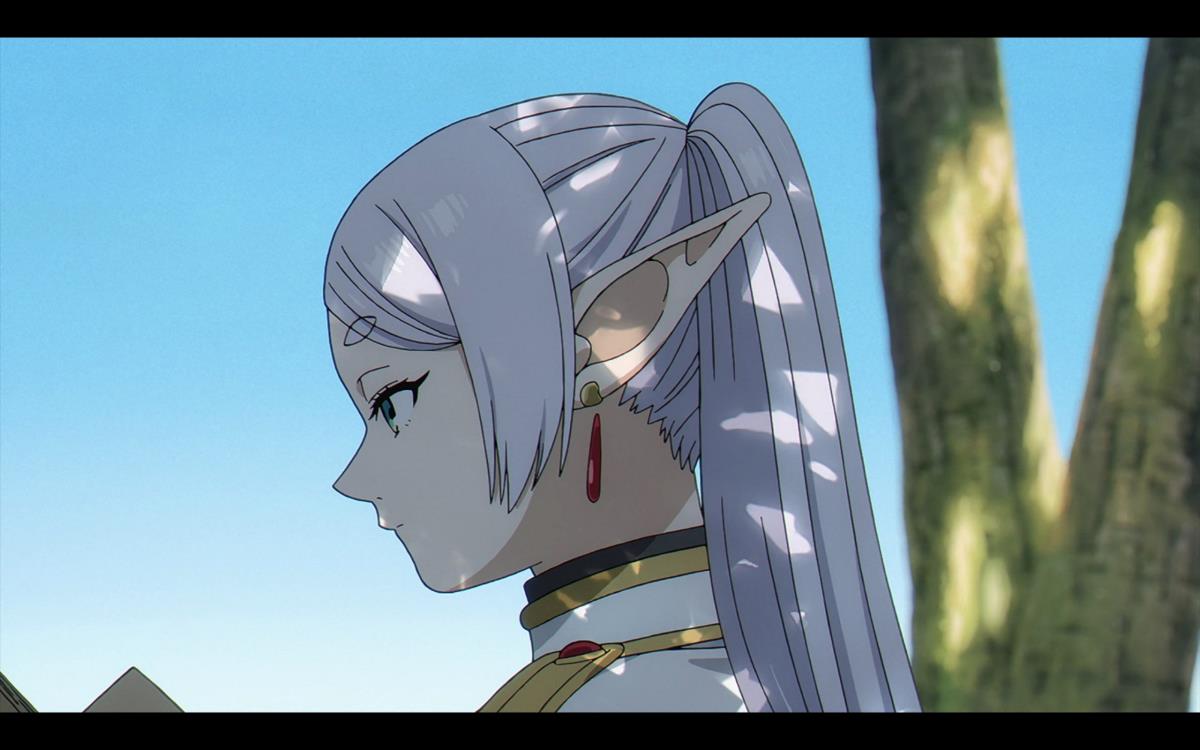
Like the manga, the anime series tells the story of a thousand year old elf named Frieren. Before the story begins, she joined forces with the hero Himmel, the dwarf Eisen and the “corrupt priest” Heiter to defeat the Demon King. As far as Frieren was concerned, this ten year adventure was just a drop in the sea of her life. But when she reunites with her aged comrades fifty years later, Frieren realizes just how much she has to learn about the mortal world. With her new apprentice Fern by her side, she retraces the steps of her earlier journey to learn what she can before time erodes everything.
Frieren is first and foremost a tale about time passing. It thrives in montage, splicing together weeks, months and years indiscriminately. As time slips by, Fern’s hair grows long. Statues rust and become overgrown with weeds. Frieren’s comrades die one after the other. This is the rare fantasy series concerned not with the epic quest to Mordor but with the trip to the Grey Havens afterwards. Fans of “mono no aware” and comics such as Yokohama Kaidashi Kikou will be right at home.
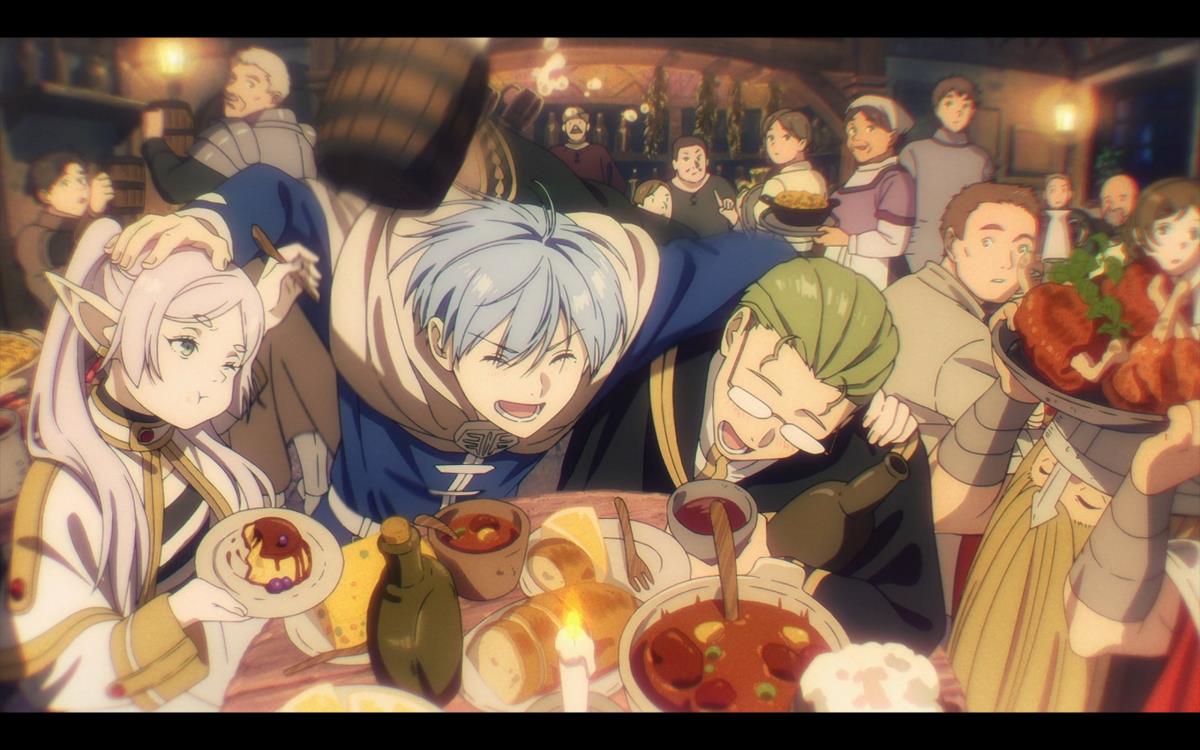
If the first volume of the Frieren manga series has a flaw, it’s that the comic’s world (in a textual and an aesthetic sense) is thinly developed. Frieren inhabits a world of “heroes” and “demon kings,” where magic works according to video game logic. Her psychology as a near-immortal being is depicted in a believable manner, as is her relationship with her steadily maturing apprentice Fern. But the landscapes and towns she visits are generic fantasy environments rather than anything specific. This actively interferes with the comic’s thesis: that the world is beautiful because it is always changing.
Thankfully, the anime makes up for this weakness and then some. Keiichiro Saito’s team overhauls Frieren’s aesthetic so thoroughly that it’s tough to know where to begin. The wind-blown trees, which express so much without being overly detailed? The way that out-of-focus flowers and passers-by recede into daubs of paint? The small touches, like children catching ducks for dinner to take home to their mothers, that ground Frieren’s fairy tale world in a lived-in reality?
I would call attention to the color of the sky. Color designer Harue Ono uses a particular shade of blue that is light, airy, but oddly piercing. It’s the kind of blue that makes you think about how people die all the time even on perfectly nice days. It expresses the balance between matter-of-factness and sentimentality that gives the show its punch.
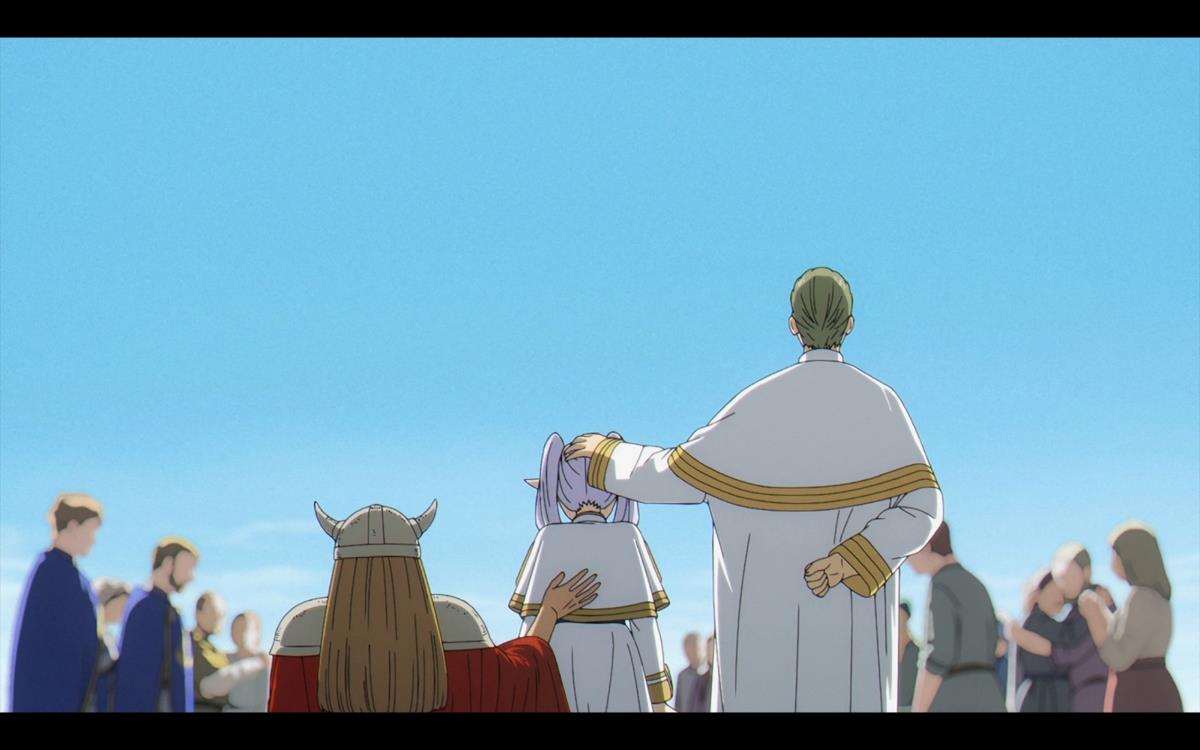
The adaptation is particularly good at interpreting key moments from the comic. The original creators, Yamada and Abe, were the ones that first imagined Frieren and her old comrades reuniting to see a meteor shower after fifty years. But it’s Saito’s team that ends that encounter with an aged Himmel gazing at a sputtering falling star, leaving the viewer with the sinking feeling that just like that star, Himmel’s life is finite. In a later scene, Frieren cries after taking Heiter’s ward Fern as an apprentice. The original artist zoomed in on Frieren’s pure, tearful expression. But the anime instead gives us Fern hunched over the cutting board in the next room, wiping her tears as she chops vegetables.
Keiichiro Saito specializes in depicting loneliness and isolation. He first broke through as a director with the eighth episode of Sonny Boy, a science fiction series headed by One Punch Man’s Shingo Natsume. Saito’s narrative diverged from the main story to tell the tale of a talking dog, Yamabiko: his time as a human, the girl he loved and the plague that consumed everything. The episode’s alien environments and atmosphere of regret, loss and decay stood out, even in the midst of a willfully weird and noncommercial show.
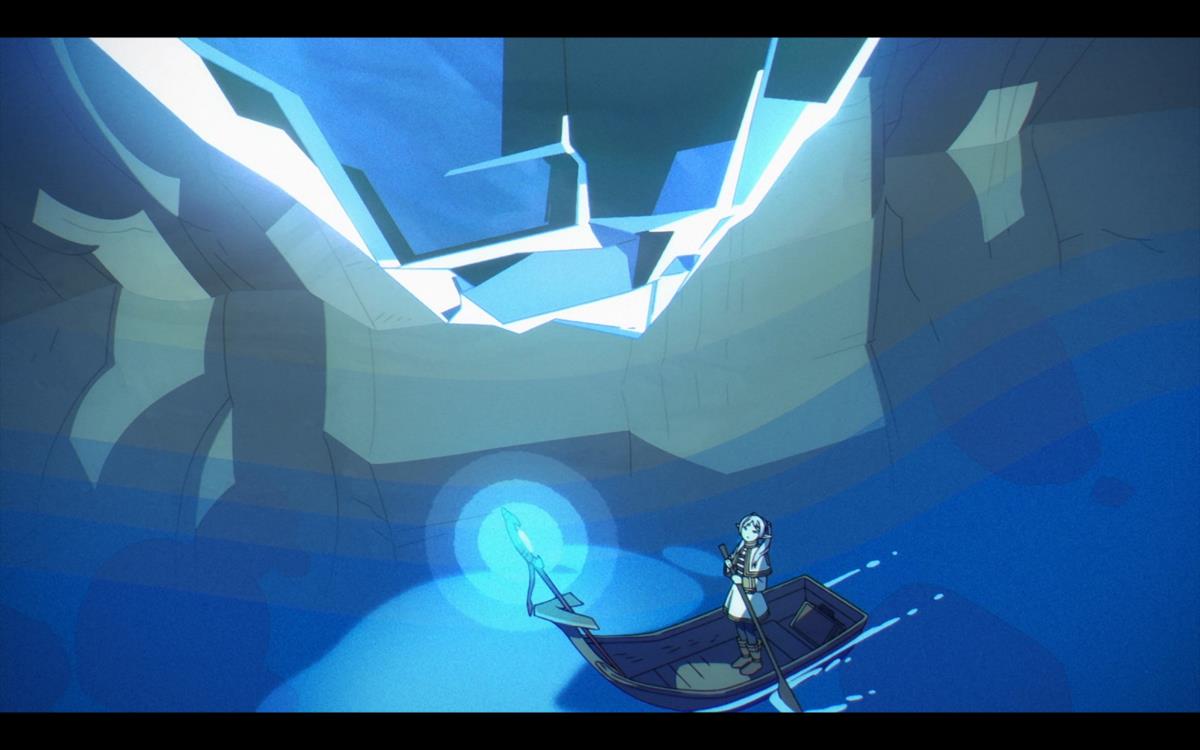
Saito’s first television series credit as director, Bocchi the Rock!, was much more light-hearted. It benefited especially from the contributions of Kerorira, a talented animator and character designer who drew several hundred animation cuts by himself. The lively animation of Bocchi and her friends attracted fans of “cute girls doing cute things,” while the show’s constant visual experimentation (3D animation, zoetropes, handmade dioramas) kept them off balance. At the same time, the show’s sharp depiction of social anxiety and isolation enticed folks who might not otherwise give shows about cute girls the time of day.
Frieren benefits from Saito’s ability to capture the inner worlds of people one step removed from normalcy. Its heroine is an immortal elf who cannot experience the world the way mortals do. Living among mortals teaches her to recognize her own emotions through them, opening an entirely new world of expression for her to explore. The opening credits of the series depict Frieren observing Fern through a window, taking comfort in her interactions from afar. It’s similar to the opening credits of Bocchi the Rock!, where Bocchi plays guitar with her friends but can never share the stage with them. In both series, learning to live alongside others means a lifetime of give and take.
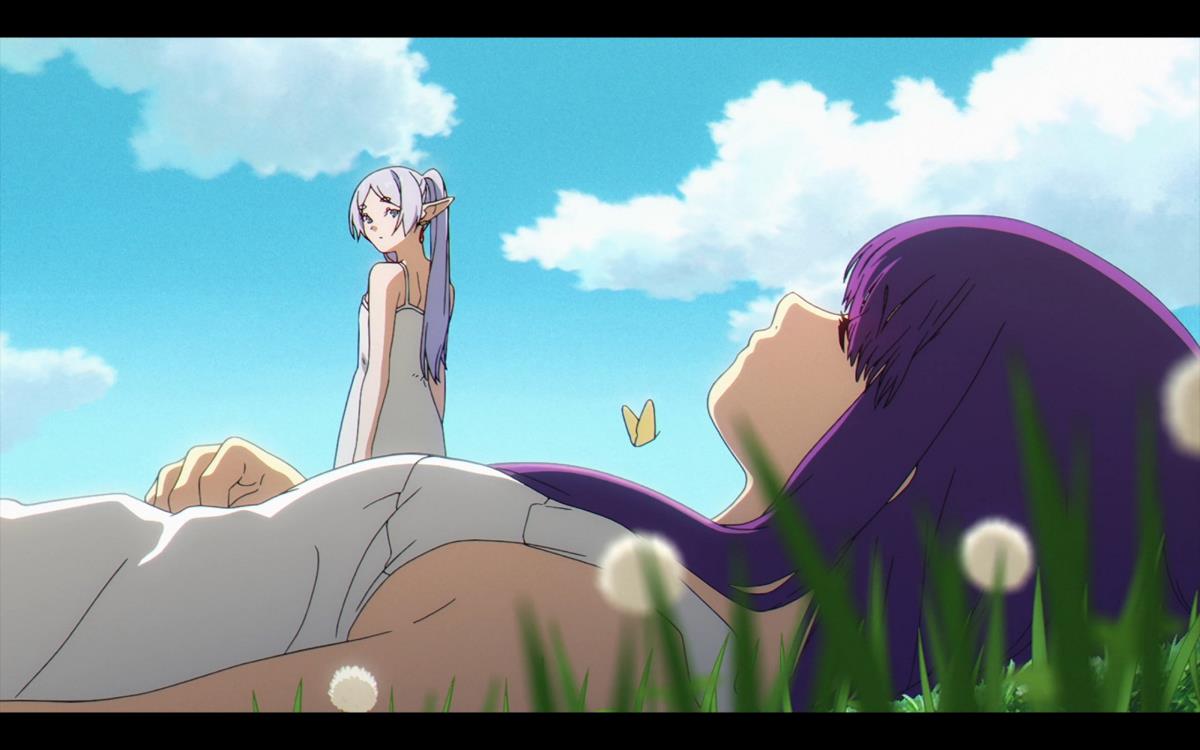
Frieren also benefits from Saito’s utter lack of interest in depicting the world photorealistically. Monsters are flickering mounds of fire and darkness. Magic sputters with texture like TV static. Even light cast through the leaves of trees appear as distinct triangles. The characters and their behaviors are just grounded enough to root the story in reality. But the ragged, emotive shapes and textures that surround them evoke the numinous core of fantasy rather than its literal surface.
So Frieren: Beyond Journey’s End is not just good, but very good. Will it remain so? The series will be two seasons long, with the first four episodes released together in a big chunk. Doing justice to just twelve episodes these days is challenging enough. Expecting twenty-four consistently great episodes, even considering the prestige of this team, may be too much. Thankfully this opening batch is a sumptuous meal on its own. Anything afterwards that awes and delights would be just a bonus.
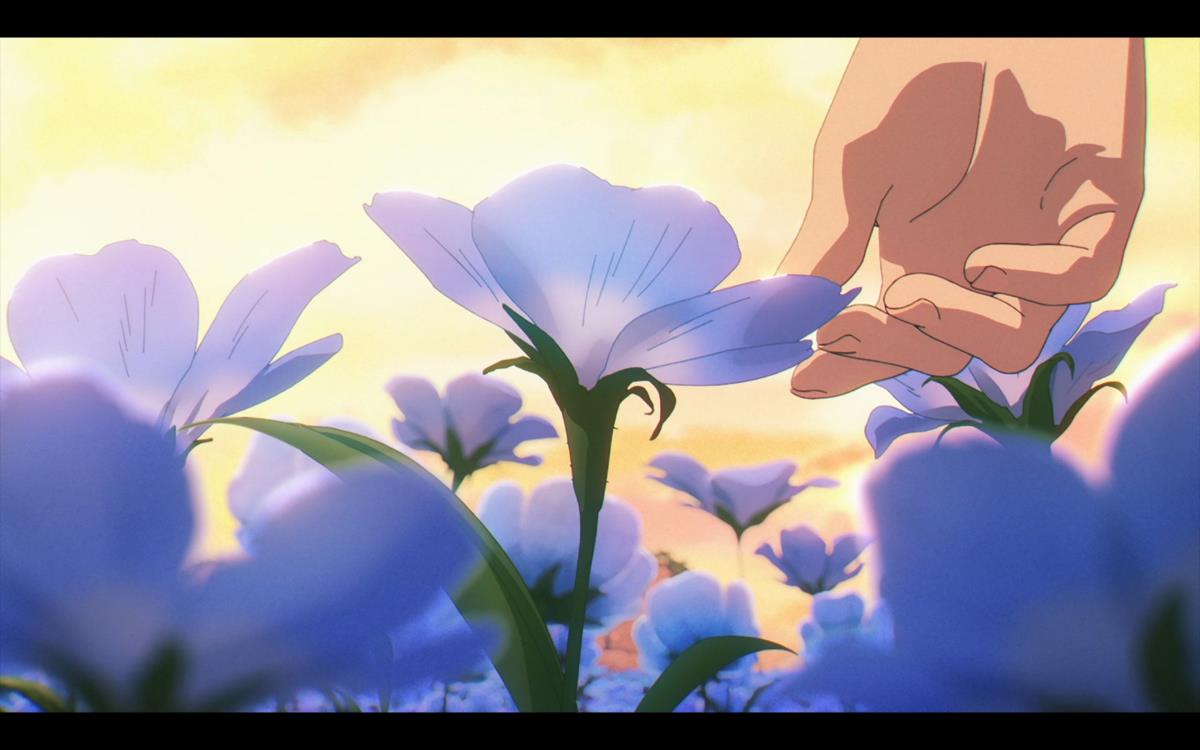
Saito and his team are undoubtedly great at adapting comics to anime. I can’t help but wish that they were given the opportunity to make something original rather than to color within somebody else’s lines. Still, considering how religiously anime adaptations stick to their source material these days, I appreciate just how much Frieren builds upon the original comic. It’s not as radical an adaptation as Bocchi was, at least so far. But I’m happy to follow Frieren’s journey wherever it might lead. As of now, this is easily the high water mark of the fall anime season, and in the running for the best of the year. If anything tops it, we’re in for a good time.
The first four episodes of Frieren: Journey’s End are now available for streaming on Crunchyroll.
Frieren: At Journey’s End (manga) volumes 1-8 by Kanehito Yamada and Tsukasa Abe are available now from Viz, with volume 9 available for pre-order.



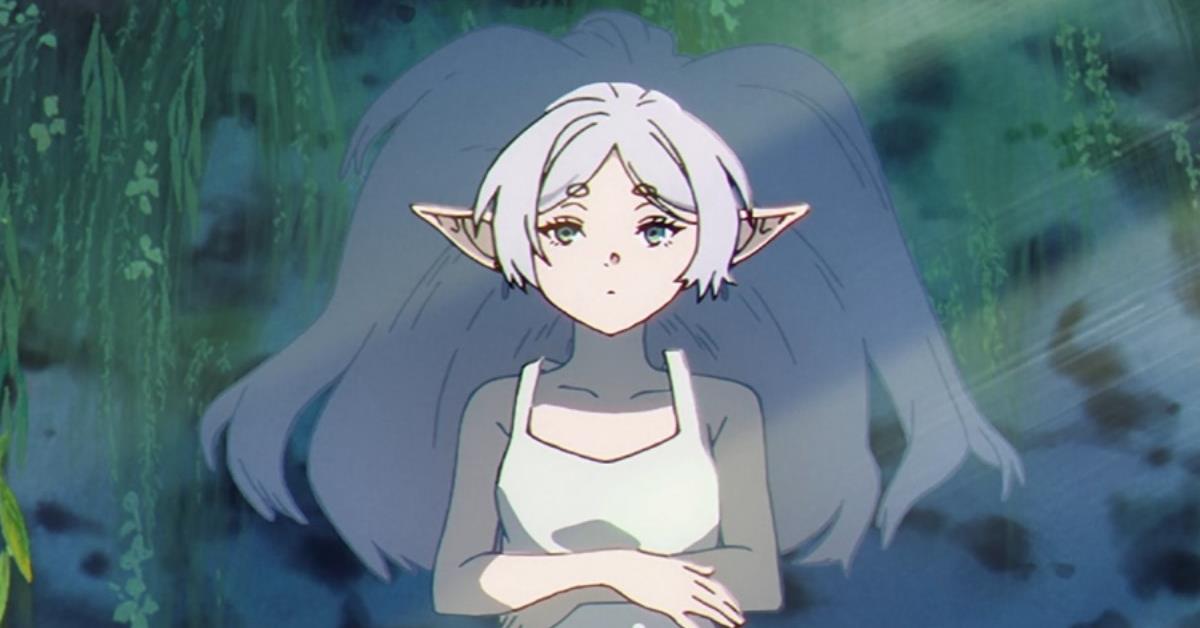







Recently i watched it. Solid and interesting tale looking on how different life and appreciating it is to an elf who lives ages longer then her fellow heroes that saved their world. It’s kind of meandering in her journey but in a very interesting manner.
Prime.
Comments are closed.